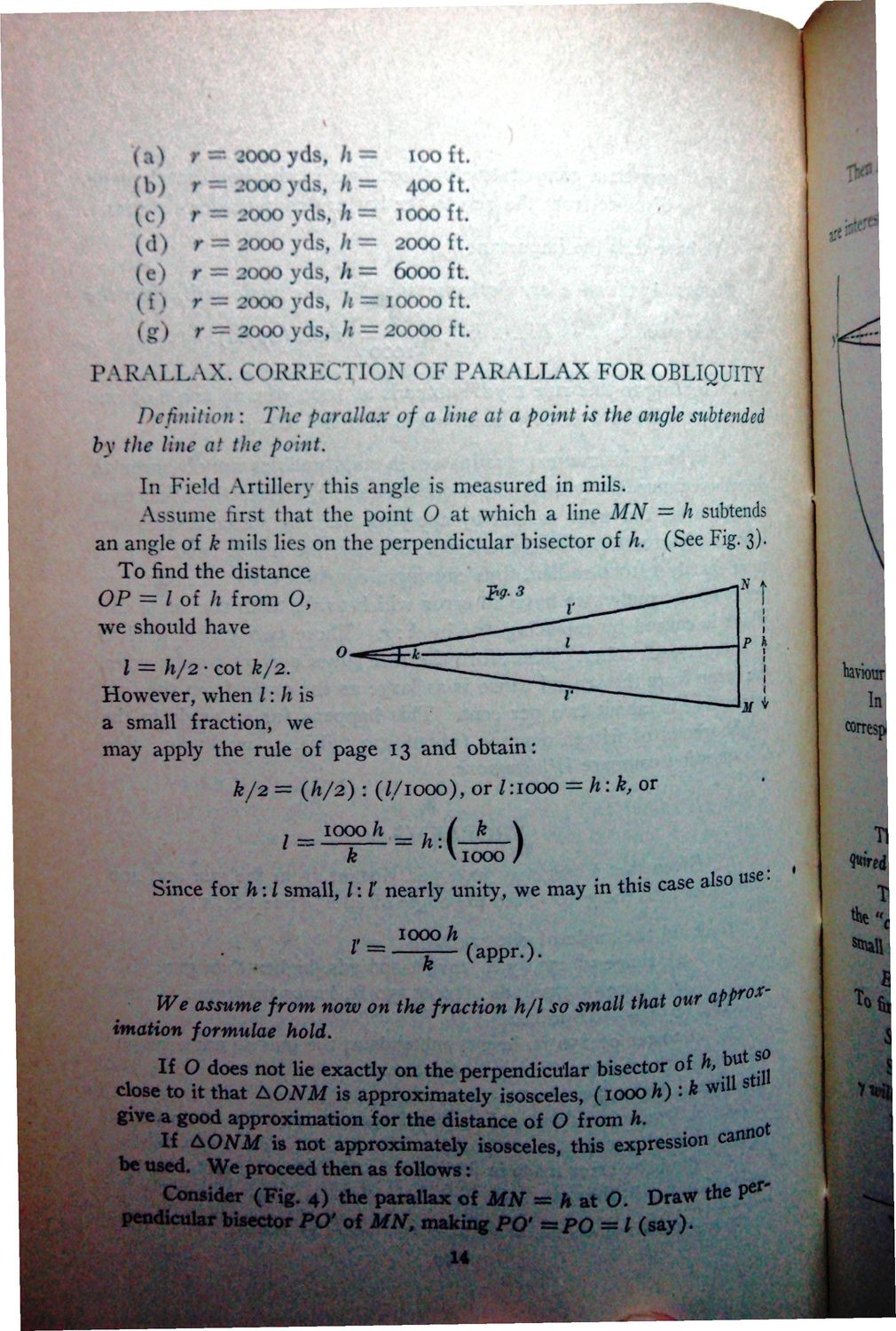| |
| |
Caption: War Publications - WWI Compilation 1923 - Article 46
This is a reduced-resolution page image for fast online browsing.

EXTRACTED TEXT FROM PAGE:
* ooo yds, h i ft. (a) r (1>) r — 2000 yds, h 400 ft. 2000 yds, A = 1000 ft. (c) r i (d) r 2000 yds, / = 2000 ft. (e) r 2000 yds, h — 6000 ft. 2000 yds, It = 10000 ft. r 2000 yd-, / = 20000 ft. * I • • 1WKALL \ \ . CORRECTION OF PARALLAX FOR OBLIQUITY Definition : The parallax of a line at a point is the angle subtended by the line at the point. In Field Artillery this angle is measured in mils. Assume first that the point O at which a line MN = h subtends an angle of k mils lies on the perpendicular hisector of h. (See Fig. 3). To find the distance OP / of h from O, we should have I h/2 ' COt k/2. However, when /: /lis a small fraction, we may apply the rule of page 13 and obtain: k/2 / {h/2) : (//iooo), or /:iooo = h:k, or iooo/t = h: k IOOO Since for h: / small, /: /' nearly unity, we may in this case also r 1000 h ~~k~~ (appr.) small u We assume from now on the fraction ion formulae hold. O does not lie exactly on the perpendicular bisector of h, t» o it that AONM is approximately isosceles, (1000 h) : k will s good approximation for the distance of O from h. t ! AONM is not approximately isosceles, this expression cann be used. We proceed then as follows: per Consider (Fig. 4) the parallax of MN = h at O. Draw dicular bisector PO' of MN, making PO — I (say)
| |